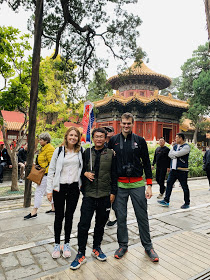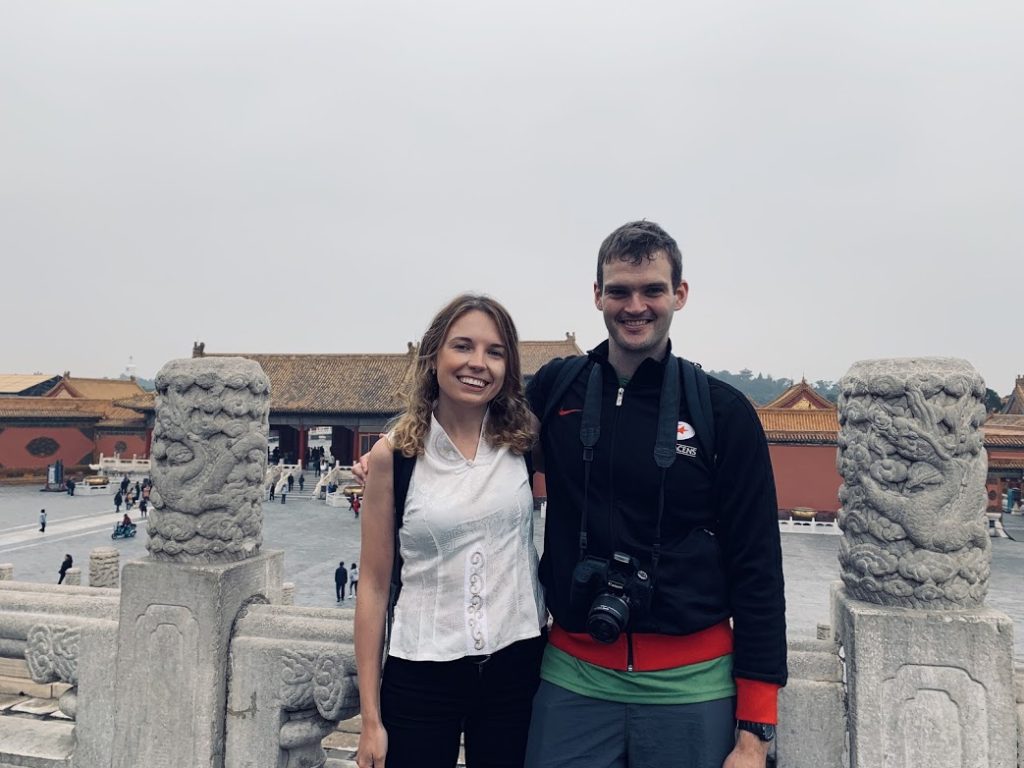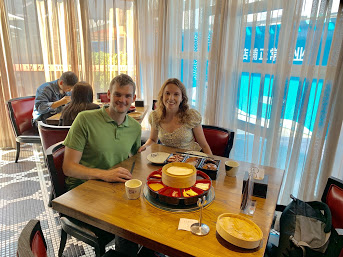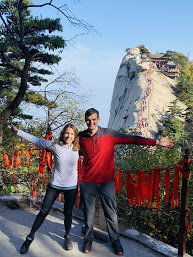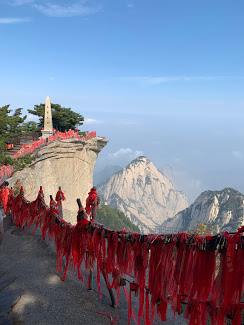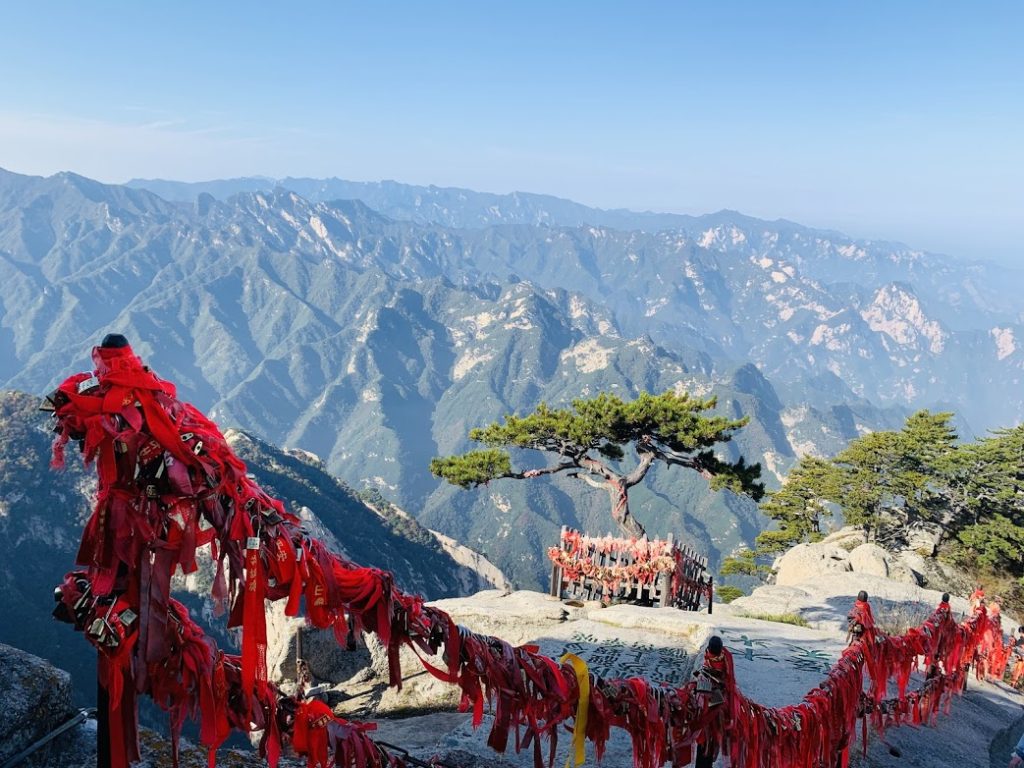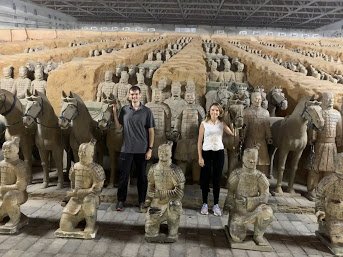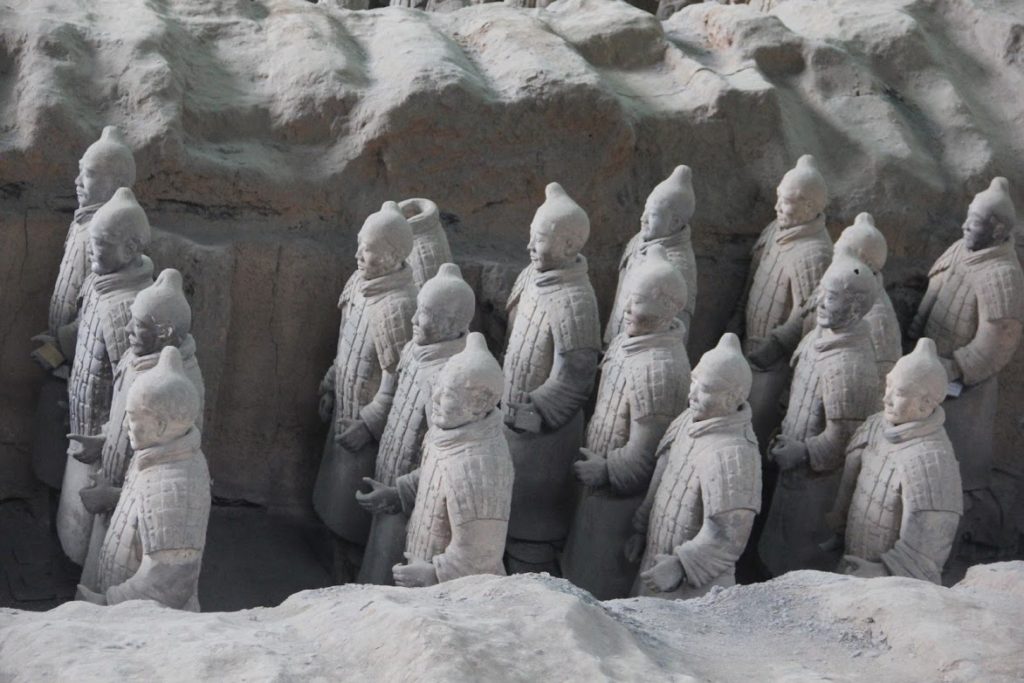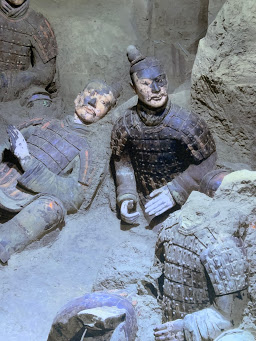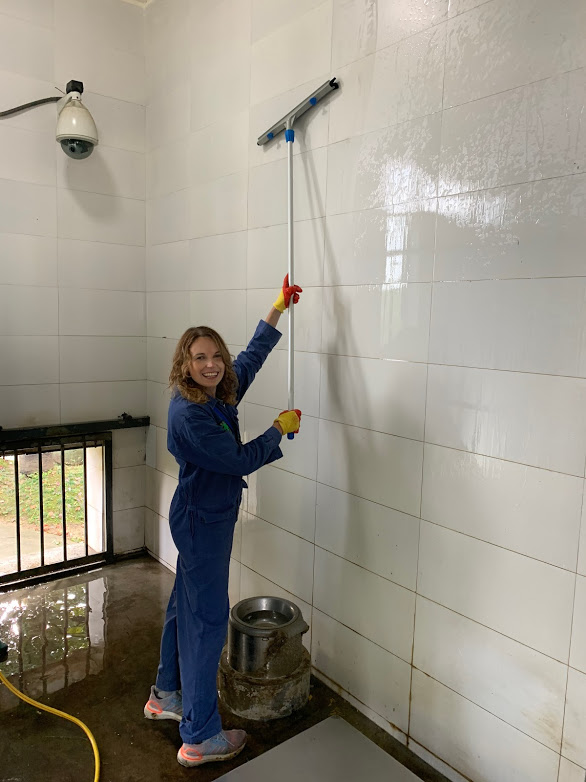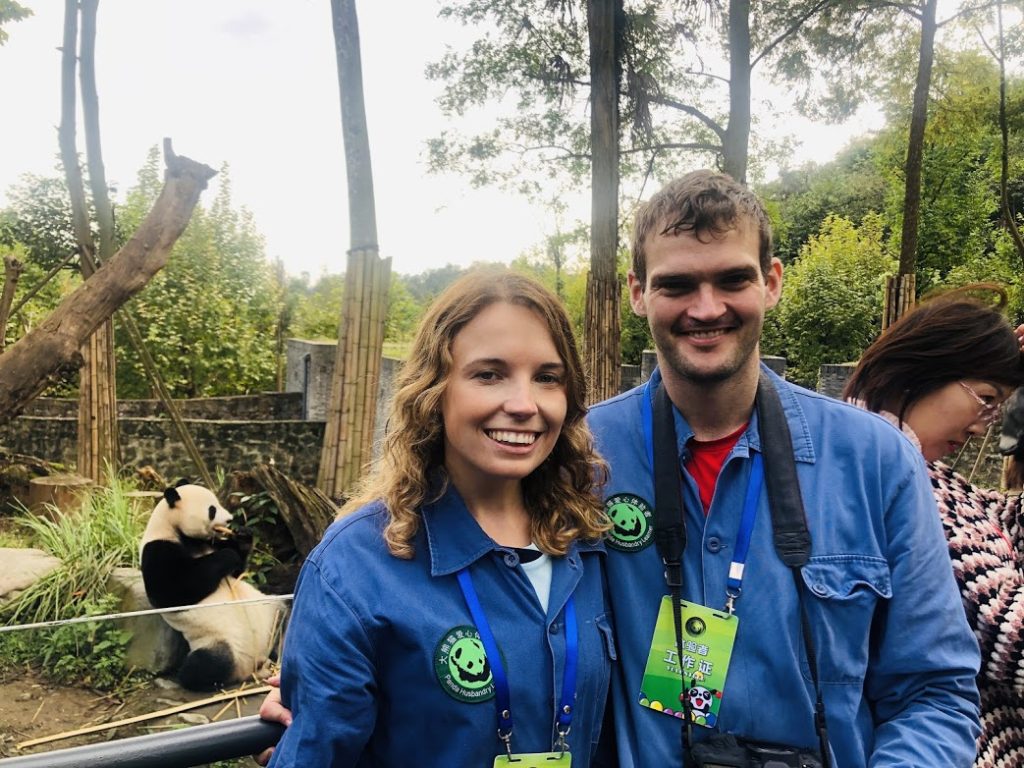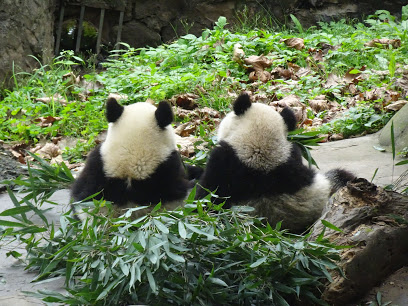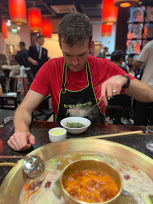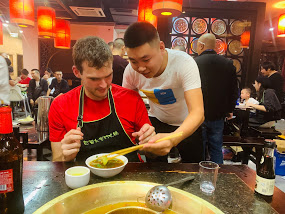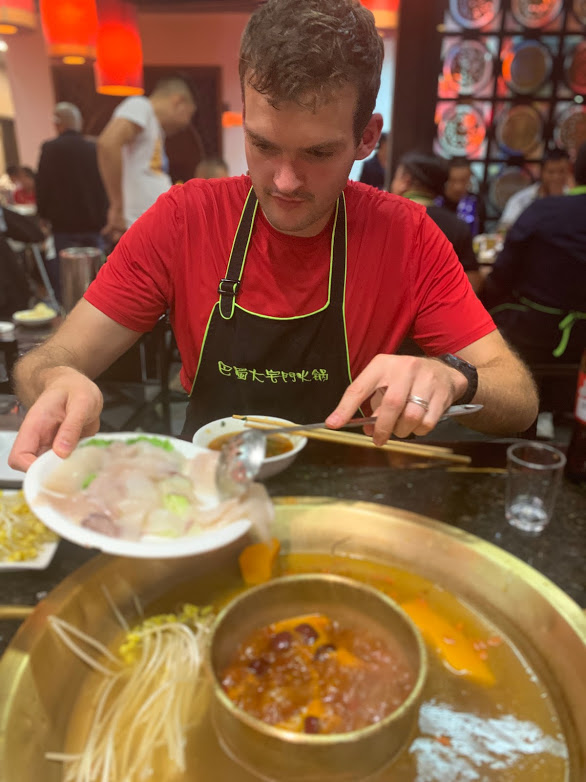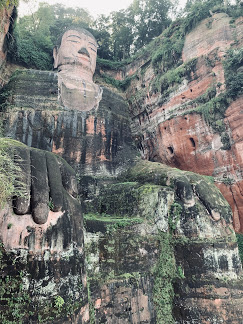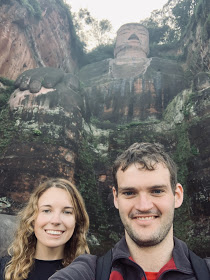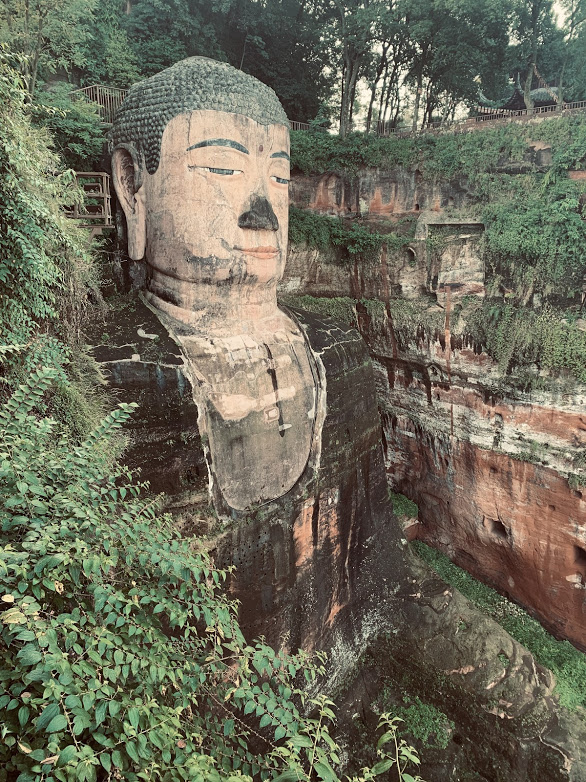We decided to do the Beijing – Xian – Chengdu route over two weeks and barely saw any foreigners in China compared to Japan. Because of this, Chinese people were always excited to have their photograph taken with us, making us feel like minor celebrities!
Beijing
We flew into Beijing and spent a few days taking in the famous sights such as Forbidden City and the Great Wall. It took a good few days to adjust to China, as the way of life is so different to anything we have seen before, especially the loudness of everything, and the constant pushing and shoving everywhere you go!
No trip to China is complete without a visit to their Great Wall. However, not all parts of the Great Wall are equal. There are good parts of the walls to visit and not so good crowded parts to visit. In spite of the lack of foreigners in China, domestic tourism is huge and some touristic sites are very overcrowded. We decided to visit the Jinshanling side two hours further out but hardly any tourists! It struck us on our drive to the wall just how quickly China is developing. It was staggering to see so many new motorways and buildings being built everywhere you looked. Considering how far it has come in a short space of time, it doesn’t appear to be showing any sign of slowing down.
We tried some more traditional things in Beijing such as visiting the Hutongs and traditional walking streets, but the highlight was trying Peking duck. It is so much better than in Chinese restaurants in the UK. Beijing is a weird mesh of the old meeting the new, with these traditional hutongs and the historic area encompassing the Forbidden city, the massive parks and the drum and bell tower (another highlight – well worth seeing one of the drum shows) being only a stone’s throw away from vast, slightly soulless streets full of designer shops and modern skyscrapers.
The other thing which immediately struck us in Beijing was the level of surveillance of its citizens. CCTV was everywhere and technology such as facial recognition is often used before Chinese people are allowed in certain attractions. ID cards are used for almost all public transportation and required for most visits to attractions, allowing extensive surveillance of where their citizens go. We had to carry around our passports everywhere, and were required even to buy a rail ticket.
Xian
We hopped on an overnight train to Xian to see the old town Terracotta Warriors. Saying that, our favourite part of the trip was hiking Mount Houshan just on the outskirts of Xian, which we only found out about from a fellow traveller on the way to Xian.
We hadn’t heard much about China’s mountains before so weren’t expecting much but were immediately proved wrong by the beauty of the mountain. We did the South peak – East Peak – Central Peak – West Peak route. If you’ve got a weakness for the world above, get your legs to China!
A bike trip around the historic walls of Xian was a fun way to see the city, and the street food markets there had some of the best street food we have ever tasted. We tried to visit the famous pagoda but it rained so hard we struggled to appreciate it. Heavy rain just as we turned up to Pagodas would soon become a recurring theme of our trip through Asia.
Our next stop in Xian was to visit the Terracota army. Discovered in 1974 the museum holds 8,000 Terracota warriors made during the Qin Dynasty over 2200 years ago. The warriors are incredibly lifelike and it feels as if they could wake up and start marching along any minute.
What we did not realise about the terracotta warriors is when the army was discovered each warrior was shattered in many pieces which have been intricately put back together over several years. Every warrior that is excavated is restored to perfection. There isn’t a chip or piece of clay missing from their face. We couldn’t help but think are the warriors authentic or fake.
All the original warriors were colourfully painted when they were unearthed, but soon after being exposed to the air, the colours disappeared and faded. Some people don’t want to excavate any more warriors until they figure out a way with technology to preserve the paint.
Today, scientists cannot open Emperor Qin’s underground tomb. There is no way to open it because the tomb is surrounded in mercury, a dangerous chemical. The Emperor believed mercury would give immortality so until they find a way to safely open the Chamber, China is stuck waiting and biding their time. Who knows with technological advances what the place will look like in ten years time.
Chengdu
When you think of China, its nearly impossible not to think of pandas. The Panda is endangered, but the Panda Research Base in Chengdu is doing its best to raise them in this breeding facility. They are working hard to keep the official face of China alive and well for years to come. We volunteered at the panda base and was incredible experience coming face-to face with pandas.
Two more highlights of Chengdu was getting our ears cleaned by a traditional street practitioner using metal rods and going to a traditional Chinese cabaret performance, seeing highly skilful acts such as finger puppets, face shifting and unusual musical instruments.
However, the biggest highlight was going to a traditional Chengdu hot pot restaurant. We were recommended a restaurant by our Panda tour guide but little did we know it would be entirely in Mandarin with no English menu available, and we were the only non-Chinese people in a gigantic and very loud dining room of around 400 people. We used a google translate app to work out what to order (it was not much use – it gave us dishes such as ‘laughing cow’ and ‘mother and child’). In the end we guessed what to order and hoped for the best. It turned out our fears were misplaced. The food was incredible, all served in a huge bowl heated in the middle of the table. We soon became a bit of an attraction (mainly due to Nick’s chopstick skills) and many Chinese people were crowding around our table, laughing and trying to talk to us!
More than anywhere else we visited, it felt like we experienced authentic China in Chengdu and loved every minute of it. It is an awesome city (it offers so much more than just the pandas for which it is famous), all the more impressive considering it has expanded from 800,000 people in the 1950’s to 14.5m today, and has still managed to maintain a feeling of culture and uniqueness. it There are a couple of spectacular mountains just outside Chengdu we didn’t visit so we will have to return in the future. It won’t take much persuading…
After Chengdu we visited Leshan to see the Giant Buddha. This was a buddha like no other as its carved out of a cliff face and lies at the confluence of the rivers in Leshan. It was built to protect ships from shipwrecks and ironically it achieved its aim as so much sediment was deposited in the river as a result of its construction the river calmed and shipwrecks were dramatically reduced. It is the largest and tallest historic Buddha statue in the world – absolutely incredible! We saw too many Buddha’s to count throughout Asia but this was comfortably the most spectacular.
China is a country full of unexpected surprises and during our two weeks the above was what we loved most about the country. We had never heard of Mount Huashan or the giant Buddha of Leshan before arriving, and they turned out to be two of our favourite things. The food was also spectacular, from the Peking duck in Beijing and the street markets in Xian to the hot pots in Chengdu. We cannot wait to return and see what other surprises are there. It truly is a magnificent country, albeit one with quite a few well publicised issues currently, but don’t let that put you off from visiting. We only scratched the surface of the country and look forward to returning.

